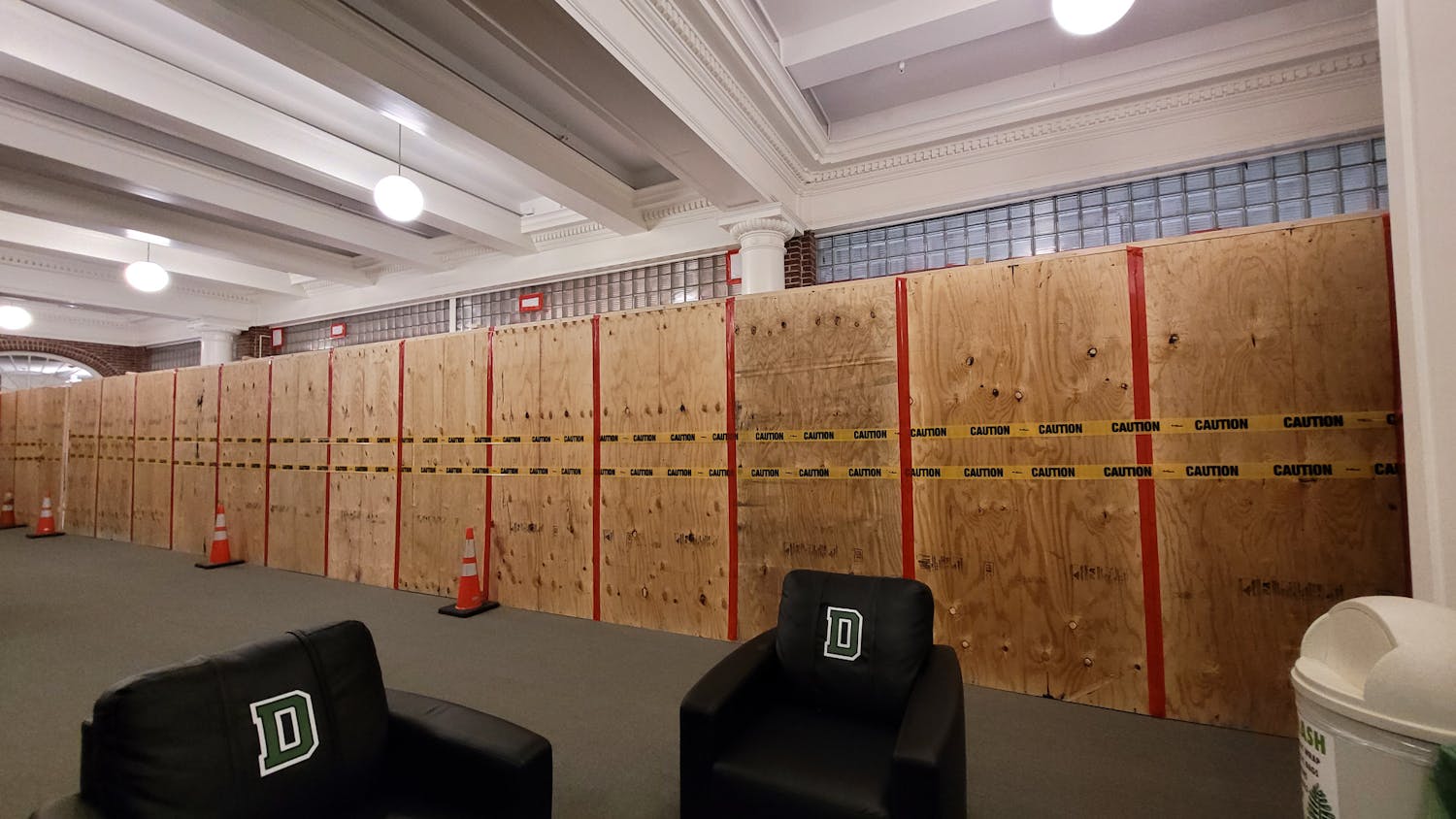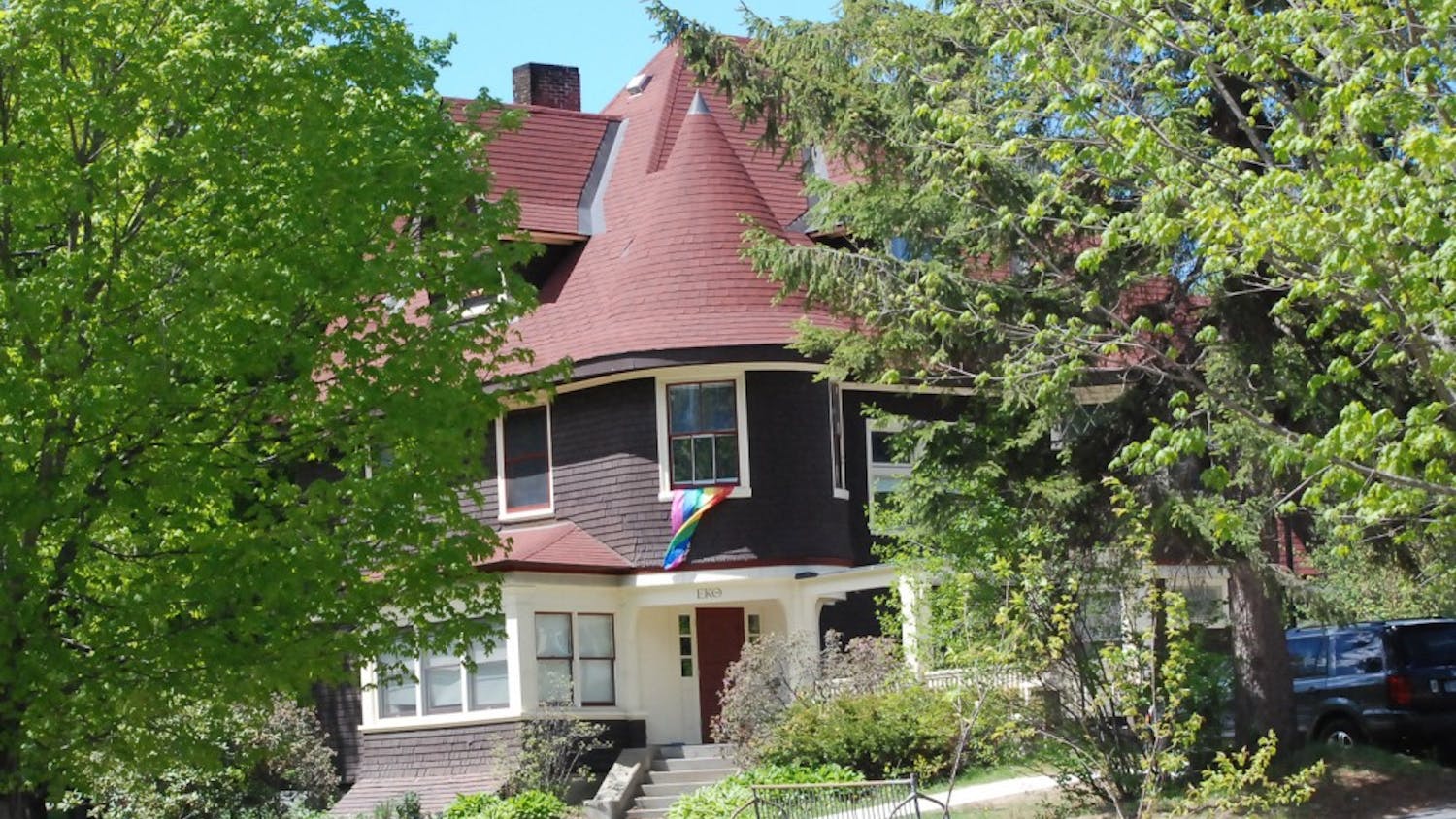The Hood Museum of Art will undergo a $50 million expansion and renovation. Changes include expanded gallery space and teaching facilities, a new multi-purpose event space and a new white and beige brick façade for the building. The renovation will close the museum from mid-March this year until winter term 2019 .
Funding for the project will come entirely through donations. Two-thirds of the funding for the $50 million dollar project has already been obtained, Hood director John Stomberg, who assumed his position on Jan. 4, said.
A major part of the expansion will be the new Center for Object-Based Inquiry. The center will consist of three object study rooms that use technology to help in the close examination and research of the artifacts in the Hood’s collection. Technologies will include teleconferencing equipment so that outside experts can virtually join the classroom and ceiling-mounted cameras that will help with the process.
The only current object study room has a capacity of 16 people. After the expansion is complete, the largest object study room in the museum will have a capacity of 35.
Deputy director of the Hood Juliette Bianco said that larger classes — and more of them — will be able to take advantage of the new space.
The expanded museum will also contain 50 percent more gallery space to be used for both permanent collections as well as exhibitions.
The additional gallery space will be used to display more of the museum’s aboriginal and Native American art collection, its modern art collection and its antiquities, Stomberg said.
Director of sustainability Rosalie Kerr said that the current museum will also be renovated as the current heating, ventilation and air conditioning systems are inefficient.
The renovations will also improve security systems, technology capabilities and the lighting and strength of the walls in the existing galleries so that they can support larger works of art.
“In 1985, there wasn’t the Internet or a whole lot of AV equipment used in museums so we don’t have the infrastructure to support new media,” Bianco said.
The expansion to the museum is designed by the architecture firm Tod Williams Billie Tsien architects
The common-purpose event space will be used to host receptions for exhibition openings or musical performances, Bianco said. The event space will also function as a lobby and a connection to the Hopkins Center for the Arts.
The Hood will host its final two exhibitions this term before the renovation begins.
Construction on the museum will last from August of this year until December 2018, during which time, there will be construction fencing between Wilson Hall and the Hop and between the Black Family Visual Arts Center and the Hop. Students will be able to access Wilson through its side door and the Hop through its main doors and its back stairwell on Lebanon Street.
From the time the museum is closed until July of this year, the museum will be emptied of its art collection.
The collection will be kept in an arts storage facility in Somerville, Mass. vice president of campus planning and facilities Lisa Hogarty said.
Between winter term 2018 to summer term 2018, the new museum will undergo an acclimatization process meant to ensure space can maintain stable humidity and temperature through different seasons.
“We want to make sure we go through different seasons — winter, spring, summer — to make sure we can maintain humidity,” Hogarty said.
During that time period 47 objects from the Hood will be on loan to 17 institutions, with an emphasis on lending to other teaching museums.
The renovation will also involve taking out existing wall plaster, reinsulating the entire building, and repairing the bricks and mortar of the original museum. Plans for the expansion include increasing energy efficiency. The new building is expected to reduce energy usage by 10 percent. The renovation will also extend the life cycle of the old Hood by 50 years, Hogarty said.
Stomberg said that students will be working with the Hood for exhibition and installation planning for the museum’s reopening.
All of the galleries in the museum will be focused on the Hood’s collection for the first 12 months after its reopening, Stomberg said.
He added that there will be two exhibitions after the reopening that will focus on the 19th century American artist Lily Martin Spencer and another will focus on the work of contemporary artists from Africa and the African diaspora.
He added that the museum will also continue working with classes and conducting community outreach for K-12 students in the Upper Valley. Digitizing parts of the Hood’s collection and putting it online will also be a priority during the closure.
During the closure, Stomberg said that the Hood intends to have satellite exhibitions on other parts of campus. Hood staff will also aim to sponsor programs like artist and art historian lectures and dance programs around campus that would otherwise take place at the Hood, Stomberg said.
“We’re looking for places around campus where the Hood can hold exhibitions that will stir up some excitement for our collections and what we do,” he said.



